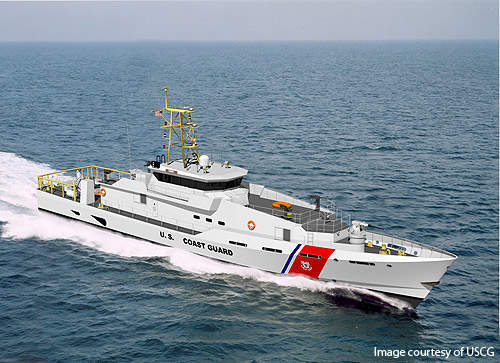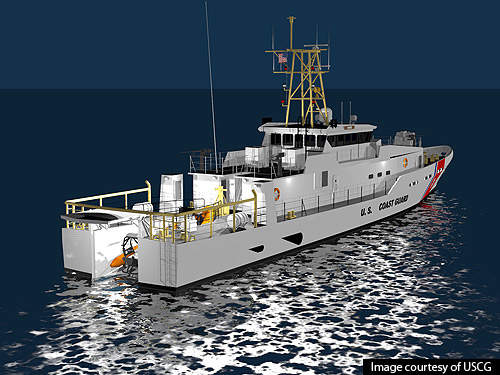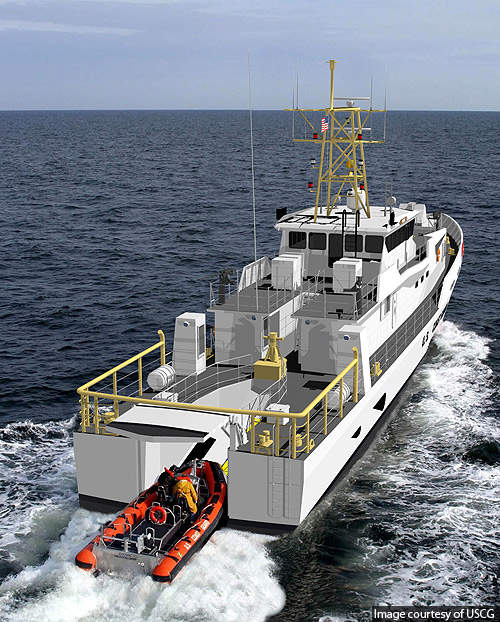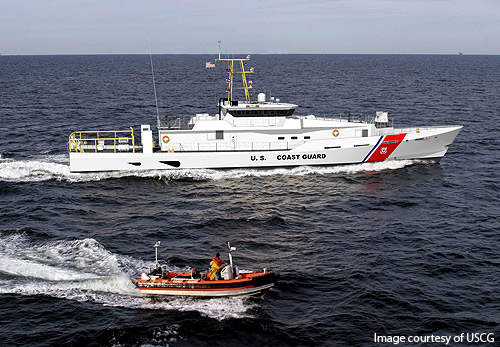The Sentinel Class patrol boat or fast response cutter (FRC) is a new class of cutters being built under the Deepwater programme of the US Coastguard (USCG). Being built by the Bollinger Shipyards, the boats will replace the aging fleet of 110ft Island Class cutters.
The new boats will help USCG address its current patrol boat gaps and efficiently complete all potential missions.
The USCG will receive its first Sentinel Class patrol boat, Bernard C Webber, in 2011. To be homeported in Miami, the lead ship Webber will conduct vital migrant and contraband interdiction missions throughout the Caribbean Sea and Gulf of Mexico.
Orders and deliveries
In September 2008, the USCG signed an $88m production contract with Bollinger Shipyards for the lead FRC, Webber. The keel was laid at Bollinger’s Lockport repair yard in April 2010. The boat is scheduled to be delivered in the third quarter of 2011.
In December 2009, Bollinger received the first contract option for three FRCs. Construction is currently underway at Bollinger’s shipbuilding facility in Lockport.
As of December 2010, the second FRC was approximately 68% complete; FRCs three, four and five were 55%, 37% and 12% complete respectively.
In September 2010, the USCG awarded a $166.1m contract option to Bollinger Shipyards for four FRCs. This option brought the number of FRCs on order to eight and total contract value to $410.7m.
The current contract includes options for up to 34 cutters. The anticipated total order value is $1.5bn provided that all options are exercised. The USCG plans to acquire a total of 58 patrol boats.
Sentinel Class design
The Sentinel Class is a modified version of the Damen Stan 4708 patrol vessel. Its design is based on the parent craft concept developed by Bollinger. The majority of the components are built in the US and some components are imported. Modifications include the addition of fixed pitch in place of variable pitch propellers, a stern launching ramp and watertight bulkheads.
The ship has a length of 46.93m and a beam of 7.74m. The displacement is 353t. The boat can endure for a minimum of five days at sea. It can accommodate a crew of 22, including 18 enlisted, two chief petty officers and two officers.
Features
The cutter features a bow thruster for manoeuvring in narrow anchorages and channels. Small underwater fins fitted on the vessel resist the rolling and pitching from large waves. The FRC can launch short-range prosecutor (SRP) rigid-hull inflatable boats for rescue and interception missions.
Sentinel Class FRC missions
Sentinel Class cutters can be independently deployed in a range of missions including port and coastal security, marine safety, marine environmental protection, fishery patrols, drug and illegal migrant interdiction, search and rescue, and national-defence operations.
The patrol boats will enforce US and international maritime law, and ensure security along the 95,000nm of coastline of US. They can conduct all missions in sea state 4 and survive in sea state 6.
Command and control
The cutters are equipped with Department of Defense (DoD) and Department of Homeland Security (DHS) command, control, communications, computer, intelligence, surveillance and reconnaissance (C4ISR) equipment.
The C4ISR systems are designed to be fully interoperable with the USCG’s existing and future units as well as partners in the DoD and the DHS.
Armament
The main gun fitted forward is a remotely operated Bushmaster 25mm chain-fed autocannon. The Bushmaster can fire 225 rounds a minute in a maximum range of 6,800m.
The cutter is also armed with four crew-served M2HB .50-calibre machine guns.
Propulsion
The Sentinel Class is powered by two 20-cylinder MTU engines developing a total power output of 4,300kW. The bow thruster will deliver 75kW power. The propulsion system provides a maximum speed of over 28kt.







